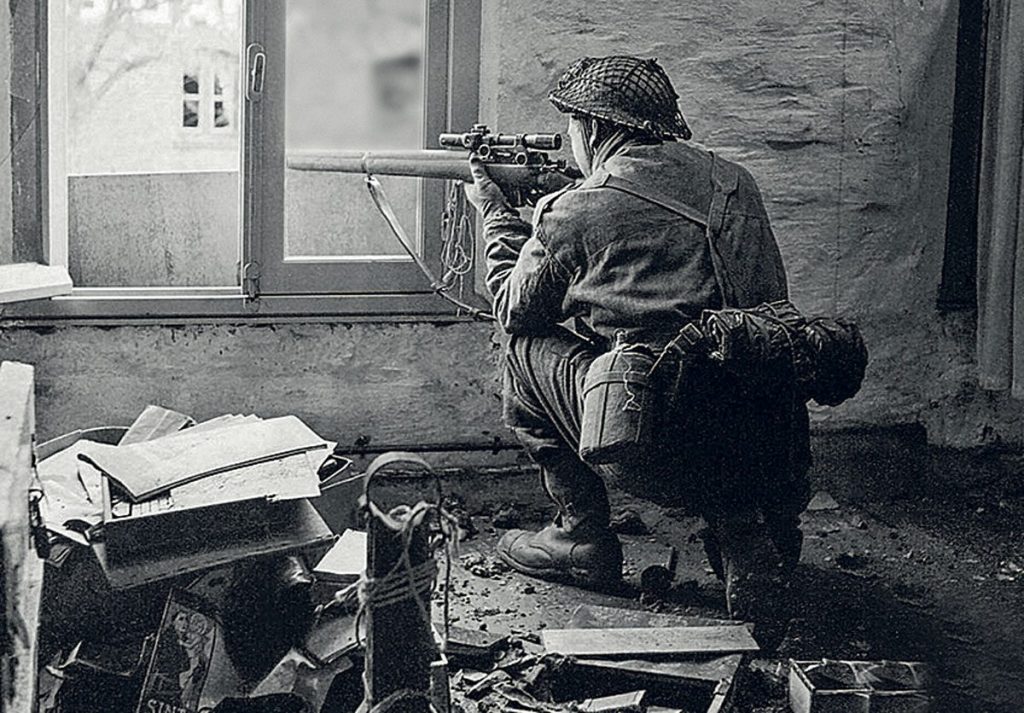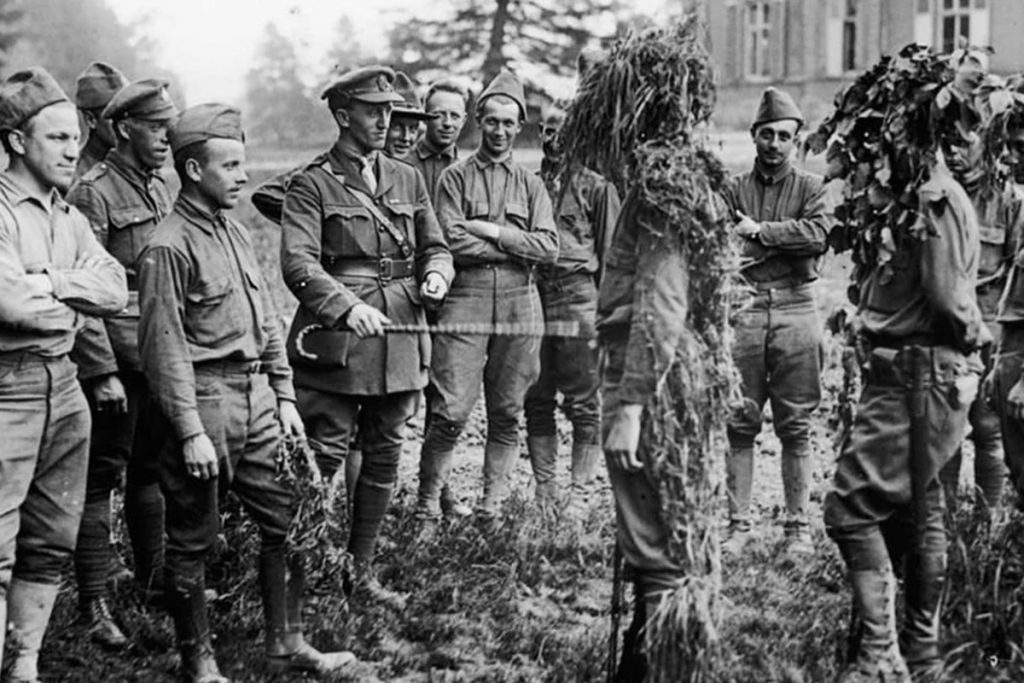The Black Watch regiment is a storied unit within the Scottish military, dating back to the early 18th century. The origin of the Black Watch is similarly steeped in history, with a long lineage of skilled marksmen dating back centuries. Following the Jacobite Rebellion, loyalists of the Highland clans of Clan Campbell, Clan Munro, Clan Grant, Clan Frazer of Lovat, and Clan Mackenzie formed Black Watch. Black Watch soldiers primarily recruited from these clans were known for their effective fighting tactics and distinctive dark-colored tartan kilts. From its formation to its amalgamation in 2006, Black Watch has contributed to some notably impactful moments in history.

Distinguished Honor
The Black Watch regiment, which had been established in the early 1700s, was no exception to this trend. Over time, the regiment developed a reputation for producing skilled marksmen, with many Black Watch soldiers distinguished in this field during both World War I and II. The Black Watch marksman are known for their exceptional skills and techniques that made them famous in the military world. They emerged during the historic Second World War, where they proved their worth on the battlefield.
Masters of Concealment
Black Watch soldiers were trained to become experts in camouflage. They knew how to blend in with their surroundings, using natural covers, bushes, and other materials to conceal their position. This made it difficult for the enemy to detect them, which gave them an advantage in taking out their target without getting caught. The soldiers would even go to the extent of brushing their uniforms with soil or mud to match the terrain.
These soldiers were also masters of patience, a notable and distinctive trait. They would stay in position for hours or even days, waiting for the perfect moment to take a shot. They were trained to remain calm and steady, taking their shot only when they were confident they could hit their target. Working in teams, Black Watch soldiers supported each other during missions. They would communicate using hand signals or other methods to coordinate their movements and take down the enemy as a unit.
These soldiers were armed with top-of-the-line weapons, which they were proficient in handling. They trained to shoot with precision and accuracy, making sure that each shot would hit its intended target. They used advanced scopes, which allowed them to see farther than the enemy could. Customized equipment and rifles suited to their personal preferences allowed for silent and efficient shot placement. In more recent times, the Black Watch has continued to produce top-notch snipers.

In 1862, a Canadian branch of the regiment was formed, known as the 5th Battalion, The Royal Highland Regiment of Canada. This new regiment was made up of mostly Scottish immigrants to Canada, who were eager to serve their new home. Members of the regiment served side by side with the Royal Highlanders, Black Watch of Scotland, however, it was not until 1905 a formal alliance between regiments was formed.
Adversaries in War
Snipers in general can be traced back to the 18th century, specifically the American Revolution. During this time, both sides utilized sharpshooters to target key individuals and disrupt enemy movements. The practice of sniping quickly gained popularity, particularly within the British military. The tradition of sniping continued throughout the 19th and 20th centuries, with the development of innovative technologies and tactics. By World War I, snipers were a crucial part of many armies, including the British Army.
World Wars
During World War I, the regiment was sent overseas to fight in Europe, serving in some of the most brutal battles of the war. In 1914, when World War I began, the Canadian government authorized the formation of a new infantry regiment to provide reinforcements for the Canadian Expeditionary Force. The new unit was designated the 13th Battalion, Royal Highlanders Regiment of Canada (The Black Watch). It was during this time that the regiment gained its reputation as expert snipers. These sharpshooters were trained to hit their targets with deadly accuracy from long distances. Their success in this specialized field made them a valuable asset to the Canadian military. During World War II, the Black Watch regiment continued its service, playing a crucial role in the Allied invasion of Sicily and the subsequent Italian Campaign. The regiment was also present at the Normandy landings on D-Day, where the snipers played a key role in neutralizing enemy positions and helping to secure the shoreline.
Selections
Black Watch snipers undergo a grueling selection and training process, which helps to separate the best from the rest. They must demonstrate not only an unparalleled level of marksmanship, but also the ability to work well under pressure, to make sound decisions in high-stress situations, and to operate with maximum efficiency and effectiveness. Once selected, Black Watch snipers are typically paired up with a spotter, who works closely with the sniper to identify targets, calculate distances and windage, and plan their approach. Together, the sniper and spotter form a deadly and highly effective team, capable of taking out targets with pinpoint accuracy in even the most challenging of conditions. One of the things that set the Black Watch snipers apart from their counterparts in other armies is their emphasis on stealth and concealment. These snipers are experts in the art of camouflage, and they know how to blend in with their surroundings, even in the most inhospitable terrain. Of course, none of this expertise would be useful without the right equipment. Black Watch snipers use some of the most advanced and sophisticated rifles and other gear in the world, including systems that allow them to calculate everything from windage and distance to the trajectory of a bullet in real-time. However, equipment alone is not enough to make a great sniper. To truly excel in this role, a soldier must have a combination of natural talent, relentless dedication, and an unwavering commitment to their mission.

Canadian Valor
Today, the Black Watch snipers continue to serve as part of the Canadian Armed Forces ensuring the safety and security of Canadian troops in the field. While their role has evolved over the years, they still carry on the traditions and valor that their ancestors exhibited during their service. The regiment’s legacy is one of bravery, resilience, and expertise, and they continue to inspire admiration and respect in Canada and beyond. That is why the Black Watch snipers of Canada are some of the most respected around the world.
Leaders of the Craft
Black Watch marksmen became famous for their exceptional strategies, which integrated excellent camouflage, advanced weapons, patience, and teamwork. Most snipers undergo grueling training courses that focus on various tasks, although it is the intensive training process that prepared Black Watch soldiers to complete high-risk missions with optimal success.
These marksmen must demonstrate strong mental and emotional discipline with patience, focus, and a heightened sense of situational awareness. They were required to remain calm under pressure to make split-second decisions, adapt to environmental conditions, and demonstrate they are self-sufficient with excellent critical thinking skills to operate.
The unique combination of specialized training and mental fortitude enabled these snipers to carry out immensely difficult missions with precision and success. Their remarkable achievements in the military world have inspired many and will continue to influence future generations. Today, the legacy of the Black Watch lives on, with the regiment still producing some of the finest sharpshooters in the world. The regiment has maintained its reputation for excellence in marksmanship, and its snipers continue to lead the way in the field of military sniping.


